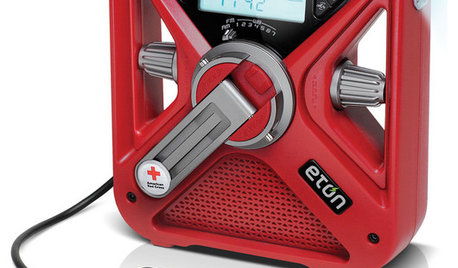B&S stops running after 30 minutes
Kevinwpi
11 years ago
Related Stories

GARDENING GUIDESHow to Stop Worrying and Start Loving Clay Soil
Clay has many more benefits than you might imagine
Full Story
REMODELING GUIDESWatch an Entire Kitchen Remodel in 3½ Minutes
Zip through from the gutting phase to the gorgeous result, thanks to the magic of time-lapse video
Full Story
DECORATING GUIDESEntertaining: Hosts Pull Out the Stops for Kentucky Derby Parties
Walk through the lavishly appointed Malvern House as designer Lee W. Robinson shares tips for gatherings that go the distance
Full Story
FRONT YARD IDEASBefore and After: Front Lawn to Prairie Garden
How they did it: Homeowners create a plan, stick to it and keep the neighbors (and wildlife) in mind
Full Story
LIFEStop the Toy Takeover by Changing the Way You Think
Make over your approach and get gift givers onboard with your decluttering efforts by providing meaningful toy alternatives
Full Story
LAWN ALTERNATIVESStop Fighting the Patchy Lawn!
Here are 3 situations where a garden may be a better idea than more turfgrass
Full Story
FEEL-GOOD HOME10-Minute Updates to Freshen Up Your Home
When life is hectic and time is limited, these speedy styling tricks can make a big difference
Full Story
WORKING WITH PROSYour Guide to a Smooth-Running Construction Project
Find out how to save time, money and your sanity when building new or remodeling
Full Story
HOME TECH7 Ways to Charge Up and Connect After Disaster
Products and tips for communicating and keeping essential items running till the power's back on
Full Story
MOST POPULARWhat to Do After a Hurricane or Flood
How you treat your home after a natural disaster can make all the difference in its future livability — and your own personal safety
Full Story





walt2002
bluemower
Related Professionals
Maple Valley Landscape Architects & Landscape Designers · Erie Landscape Architects & Landscape Designers · Williamsburg Landscape Contractors · Lake Zurich Landscape Contractors · Milford Landscape Contractors · Placerville Landscape Contractors · Salem Landscape Contractors · Tacoma Landscape Contractors · White Bear Lake Landscape Contractors · Forest Hill Landscape Contractors · Clark Window Contractors · San Juan Capistrano Window Contractors · Sherman Oaks Window Contractors · Snoqualmie Window Contractors · South Laurel Window ContractorsKevinwpiOriginal Author
bill_kapaun
KevinwpiOriginal Author
mownie
bill_kapaun
mownie
rcbe
KevinwpiOriginal Author
KevinwpiOriginal Author
bill_kapaun
mownie
mownie
grass1950
mownie